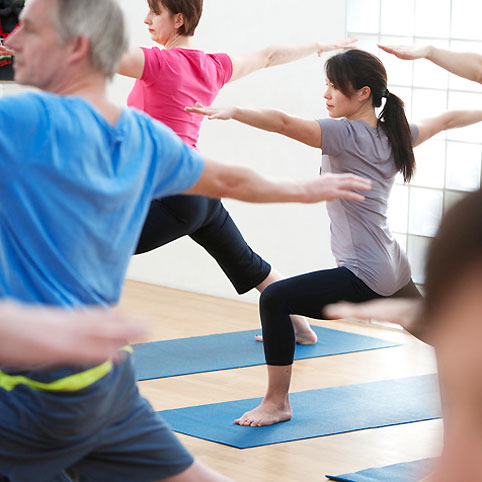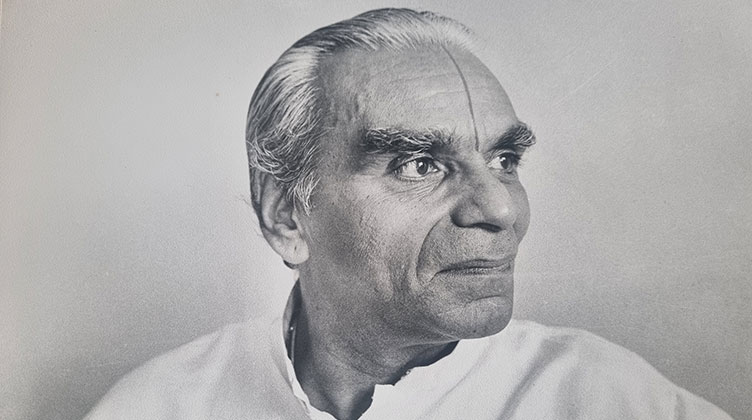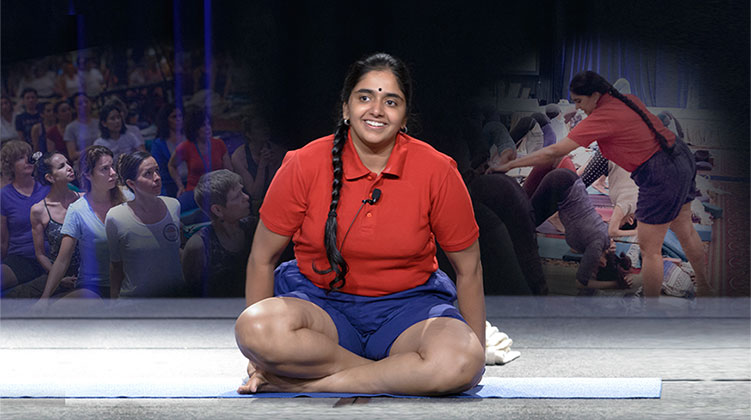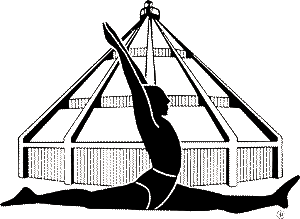
Gyaan Lyon is an aspiring tenor and has congenital right-sided hemiplegia, a form of cerebral palsy. He explains how Iyengar yoga helps him maintain health and stability.
I have congenital right-sided hemiplegia, a form of cerebral palsy. Specifically, my right hand and foot are completely paralysed with limited movement in my right shoulder, arm and leg.
Coping with pain from neuromuscular spasticity is one of the most debilitating facets of my disability in daily life. Various physiotherapy treatments since childhood have been ineffective and very painful with little relief.
In February 2012, the spasticity and resulting pain became so acute whilst I was completing university coursework in London that it felt as if each and every cell on the right side of my body was being strangled from the inside. A previous year of repetitive right ankle sprain injuries sustained from walking barefooted at home made matters worse.

Through a chain of events, I began attending Hatha yoga classes in a local gym around that time. Noticing the relief it brought from doing a few asanas to the best of my limited abilities, I began practicing during the Christmas break with my mother, who has been practicing Iyengar yoga since 2003. Gradually, she introduced me to the Iyengar method. I quickly became attracted to the precision in the instructions and the focus on alignment within the asanas as well as the use of props which brought greater alleviation from spasticity.
Exploring supported asanas
The practice wasn’t easy. With poor balance, accumulated muscle tightness and poor spatial awareness, even learning to centre myself on a mat was challenging due to my right eye hemianopia. We were fortunate to enlist the help of one of my mother’s teachers, Annie Ciekanski, who greatly broadened the range of supported asanas we explored. Annie, who spent over two decades assisting medical and general classes in Pune, also got me up into chair Salamba Sarvangasana much to our amazement.
By April 2013, I began attending Beginners classes on a regular basis at Iyengar Yoga London. During occasional attendance at the remedial classes Korinna Pilafidis-Williams and Judy Smith established a core of essential props to allow me to independently follow regular Beginners classes with maximum asana alignment and minimal class disruption. This has not been straightforward, but has instead evolved with my practice over time.
Building knowledge
Cumulative suggestions from various teachers during regular classes at Iyengar Yoga London and daily practice at home or in class since October 2013 have sped the process along while also deepening my understanding of asana alignment and sequencing. It has been very rewarding to practice independently in class despite my limitations and to be able to follow 85-95% of asana sequences over a short period of time with the appropriate props. I have also learnt many alternative supported asanas to perform when I am unable to follow the class.
A medical class with Geetaji:
My first Sirsasana
Amongst the spectrum of modified asanas I practice, some favourites stand out. To independently do chair Salamba Sarvangasana and recently, thanks to Penny Chaplin, stool Ardha Halasana are two asanas that I didn’t expect I would ever be able to do on my own for many years. Rope Salamba Sirsasana was also an asana that I never expected to ever experience. But Annie found a way for me to do it with assistance in my first Iyengar yoga retreat with her in France in August 2014; and since then, I have been able to periodically practice this asana with help at Iyengar Yoga London.
My motivations for continuing the practice are diverse: relief from spasticity, better posture, increasing energy, strength and stamina, calmness and improving body awareness are all major incentives. My foot is also becoming less retracted and flatter, which is allowing my orthotist to experiment with making lighter and less voluminous ankle-foot orthoses.
The journey ahead
I firmly believe that my commitment to daily practice, regular class attendance and several blocks of Tomatis Audio Psycho-Phonology therapy over the last few years are the driving forces behind the rapid progress I am making in the various supported asanas I do. Having done blocks of Tomatis therapy as a child in France to remedy many learning difficulties I had in school and in recent times to help with vocal training, I’m convinced that it has also contributed to improving my yoga practice. It was during the course of a Tomatis block in October 2013 that I did my first autonomous chair Salamba Sarvangasana at Iyengar Yoga London, which in turn was a key motivation for starting my daily practice. Senior teacher John Schumacher explains that doing one asana a day is a good way to start one’s own practice.
These three quotes from Yogacharya B K S Iyengar have become guidelines for my daily practice:
“Everyday you must walk the fine line between courage and caution.”
This was a recommendation B K S Iyengar gave to Senior teacher Garth McLean, who has multiple sclerosis.
“Those of us that have a yoga practice, every day is a new experiment… some days are failed experiments.”
A quote recounted by a senior teacher.
“Stay [in the asanas]….so that the intelligence penetrates deeper and deeper and traces the dark spots in the body, which remain dormant or inactive.”
Jan Schmidt Garre interview with B K S Iyengar (17:03-18:15), Bonus Disc, Breath of the Gods, 2013
I have been very fortunate to work with many experienced teachers: Penny Chaplin, Korinna Pilafidis-Williams, Rosemary Da Silva and Judy Smith at IYMV and various senior guest teachers abroad including Annie Ciekanski, Garth McLean, Gabriela Giubilaro, Bobby Clennell and Uday Bhosale.
In sum, my Iyengar yoga practice is now firmly part of my lifelong quest for health, stability and personal growth.
Blog categories
Become a member
Join our community to get reduced class prices, early booking for events and workshops plus access to the studio for self practice.
Recent news and articles
Iyengar Yoga Home Practice Videos with Raya Uma Datta
27 March 2025|
B.K.S. Iyengar’s visits to Ann Arbor, Michigan
20 March 2025|
Origins of the Modern Yoga Mat
24 October 2024|












